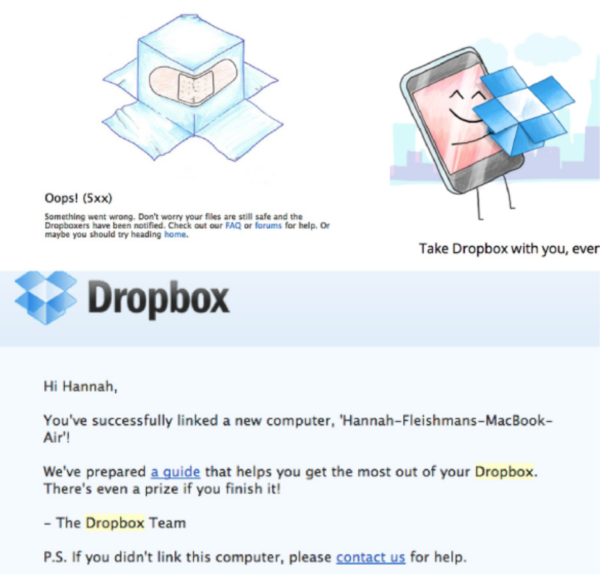If you struggle with converting visitors into customers, it may have something to do with brand consistency. Did you know that only 22 percent of businesses are satisfied with their conversion rates? That means there’s a lot of room for improvement.
When you run a business, you need to maintain consistency across all channels. Your website, email, social media, and marketing campaigns should have the same message and vision. Otherwise, it’ll prove challenging to guide your customers through the sales funnel.
You need to build brand awareness and trust with your audience before they can turn into customers. Being consistent in your marketing practices is the perfect way to do so. Embodying the same values and mission throughout your brand shows your audience they can trust you enough to move forward and purchase.
It can be tricky to maintain consistency as your business grows. With additional personnel, products, policies, and more, it’s easy to understand why it’s a challenge. But keeping your branding consistent doesn’t have to be difficult.
Here are a few tips to help you get started if you want to maintain consistency alongside brand growth.
Develop Brand Guidelines
Many businesses create brand guidelines or style guides that help different departments create clear marketing messages. They also exist for employees to refresh their knowledge about the company’s branding and how best to translate it to customers.
As your business grows, it becomes more essential for employees to understand the company’s style guidelines because details can get lost in the sauce. And when it comes to your image, it’s the details in custom branding that make your business stand out.
Your style guide should include:
- Mission: What do you want your brand to achieve? Think about your goals and what milestones you want to reach through your business.
- Values: What principles does your brand follow? Company values are important because your customers want to invest in brands that believe in the same things they do. It’s also a blueprint for what the company believes in and what it stands for.
- Personality: If your brand was a person, what type of personality would it embody? Is it perky and upbeat? Or is your brand persona more serious and informative?
- Messaging: From describing your products to speaking to customers, your team must know how to communicate and get a clear message across.
- Visual elements: The visual look of your brand is what will catch your audience’s eye right away and force them to decide to check you out or not.
Dropbox uses a consistent design and message throughout their website and email marketing:
Stay True on Social Media
If you adopt one persona on your website and then adopt a different personality on social media, you’re sure to confuse your audience. They won’t understand who’s speaking or if they’re the ones being spoken to. When posting content or engaging on social platforms, you need to use the same elements you use on your website.
Around 43 percent of people use social media to research products and services they’re interested in. If a potential customer visits your social profiles and doesn’t recognize your brand through its many elements, there’s a good chance they’ll go elsewhere.
You’ve already decided how your brand will present itself through your website, so now you need to move those ideals over to social media. If you embody a fun, lighthearted personality on your website but you’re serious and stern on social media, people will turn away in confusion.
When using social media, refer to your branding guidelines to ensure you’re using a consistent tone and personality. It’s also essential to spread the same marketing message and express the same values to build brand authenticity. When promoting new products or content, embodying the same tone and voice makes room for more conversions.
Maintain Relevance in Your Content
It’s important to maintain relevance in your content to ensure you’re spreading the same message across all marketing channels. Businesses choose consistency because it easily leads customers through the sales funnel and produces conversions. And seeing as 81 percent of business owners put content at the core of their marketing strategies, it’s easy to see why staying relevant is important.
If your campaigns, blog posts, emails, landing pages, and other content don’t accurately reflect your brand and its values, it shows your audience you don’t have a clear vision. No one wants to do business with a company that’s unsure of what it’s doing, and this pushes customers away.
The best way to ensure you maintain relevance throughout your content marketing is by tracking your progress every step of the way. This means:
- Collecting feedback from customers. Whether you send a survey or pose questions on social media, hearing what people have to say about your content will give you insight into how to improve.
- Tracking conversions. Your website, email, and social analytics show you what content performs well with your audience and what doesn’t so you know what direction to go in next.
- Measuring site traffic. Pay attention to what content users spend the most and least time on. Are there specific topics or keywords that pique their interest? You want to continue producing content your audience enjoys so your site increases engagement.
Over to You
As your brand grows, you want to ensure it maintains consistency. Sometimes, rapid growth in a company causes confusion that leads to inconsistencies, but this doesn’t have to be the case for you. How will you remain consistent in your content marketing efforts?
